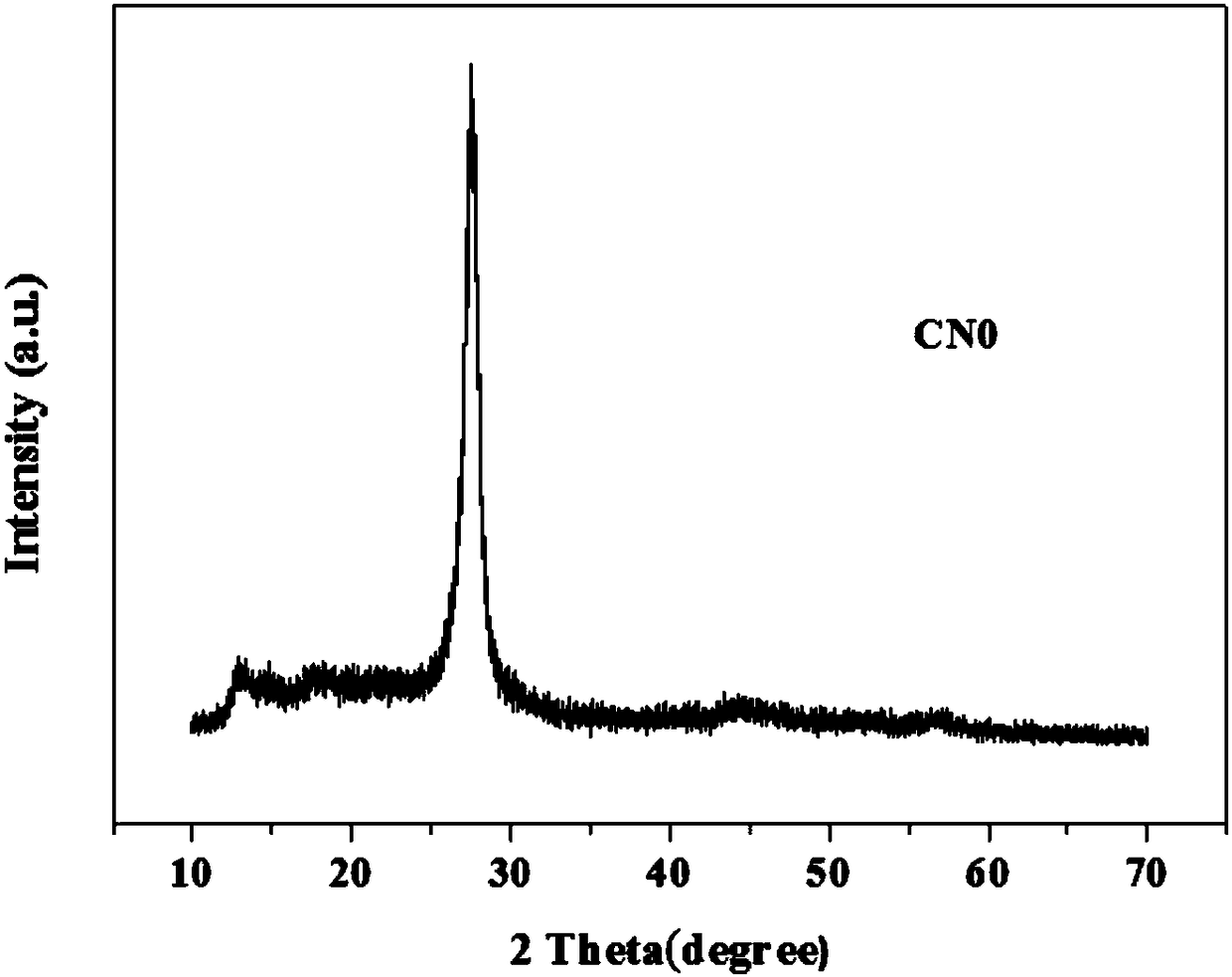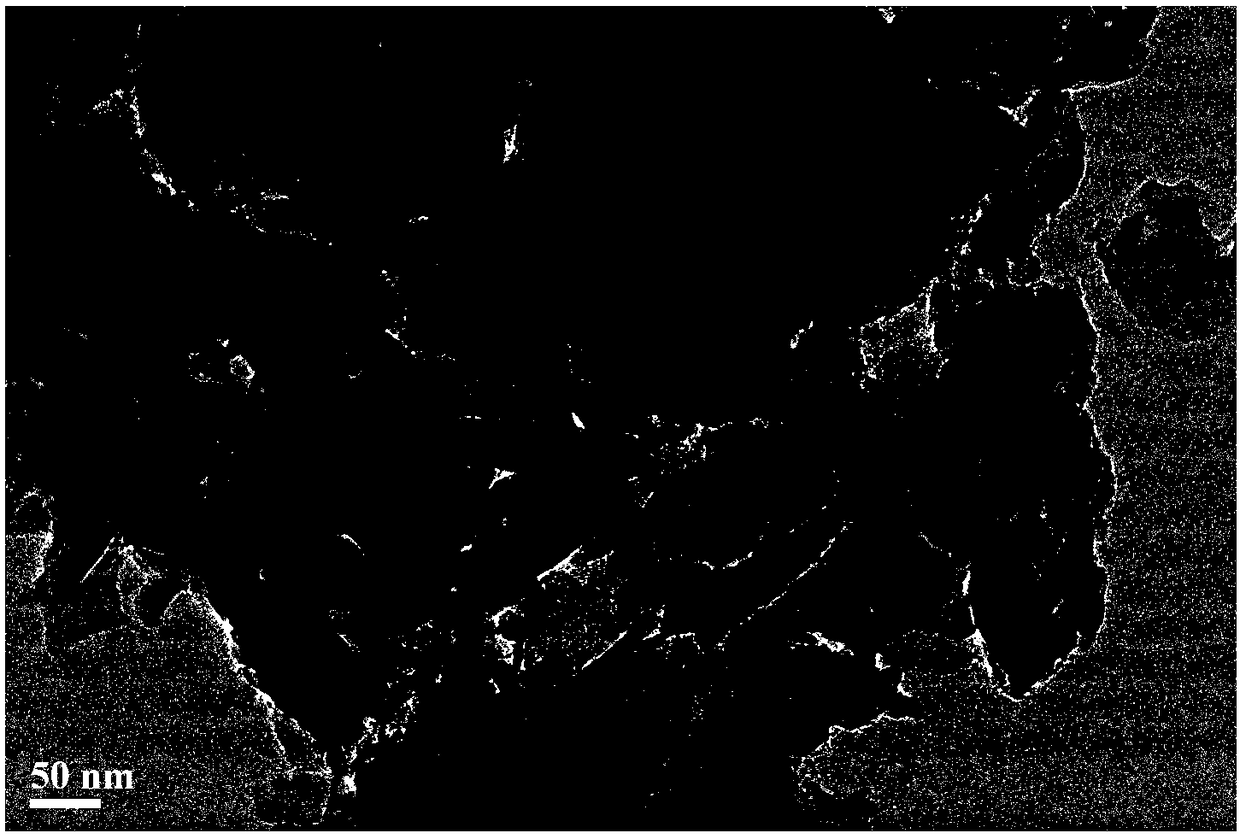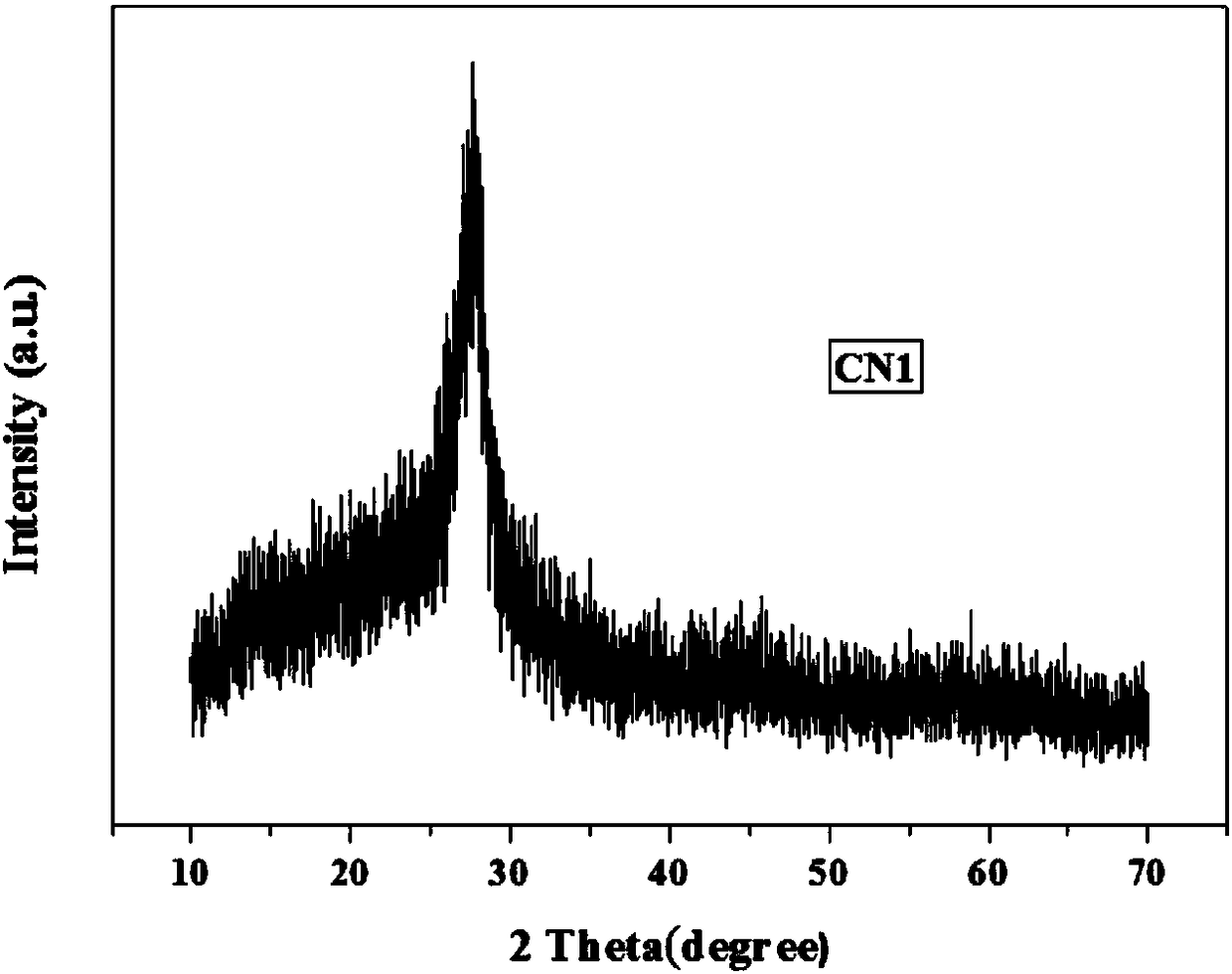Nitrogen-defect graphite-phase carbon nitride nanosheet photocatalyst, method for preparing same and application
A graphitic carbon nitride and photocatalyst technology, applied in the field of photocatalytic materials, can solve the problems of low photocatalytic activity, small specific surface area, large particle size, etc., and achieve the effects of simple operation, cheap raw materials, and reduced recombination rate
- Summary
- Abstract
- Description
- Claims
- Application Information
AI Technical Summary
Problems solved by technology
Method used
Image
Examples
Embodiment 1
[0029] Example 1 Pure g-C 3 N 4 (CNO) photocatalyst
[0030] (1) Preparation method
[0031] Calcinate 2.52g of melamine directly at 550°C for 4h under nitrogen atmosphere, and the heating rate is 5°C / min to obtain pure g-C 3 N 4 (CNO) photocatalyst.
[0032] (2) Detection
[0033] figure 1 For the XRD test figure of the CNO prepared in embodiment 1, by figure 1 It can be seen that the sample has two diffraction peaks at 13° and 27°. According to the formula, the grain size of the sample is calculated to be about 15.2nm.
Embodiment 2
[0035] Example 2 Nitrogen defect graphite phase carbon nitride nanosheet photocatalyst
[0036] (1) Preparation method
[0037] 1) Put 2.5g of melamine into the crucible for calcination at 350°C and keep it for 5 hours, then cool naturally to obtain precursor A (solid);
[0038] 2) Then, 2g of precursor A was dissolved in 60mL of deionized water to prepare a solution with a concentration of 0.2mol / L, heated at 60°C, magnetically stirred, then 0.75g of oxalic acid was added dropwise, and the resulting mixture was put into an oven , and dried at 100-110°C to obtain precursor B; put precursor B into a mortar and grind it, put it in an alumina crucible after grinding, and put it in a tube furnace under a nitrogen atmosphere at 550°C Calcined for 4h to obtain the target product nitrogen-deficient graphite phase carbon nitride g-C 3 N 4 Nanosheet photocatalyst (CN1);
[0039] 3) Put the target product GN1 in a muffle furnace and calcinate at 550°C for 2 hours in an air environme...
Embodiment 3
[0044] Example 3 Nitrogen-deficient graphite phase carbon nitride composite photocatalyst
[0045] (1) Preparation method
[0046] 1) Put 2.52g of melamine into the crucible for calcination at 420°C and keep it for 5 hours, then cool naturally to obtain precursor A (solid);
[0047] 2) Then, 2 g of precursor A was dissolved in 60 mL of deionized water to prepare a solution with a concentration of 0.2 mol / L, and 1.5 g of oxalic acid was added under heating conditions at 60°C and magnetic stirring, and the resulting mixture was put into an oven, Dry at 100-110°C to obtain precursor B; grind precursor B in a mortar, put it into an alumina crucible, and calcinate at 550°C for 4 hours in a tube furnace under nitrogen atmosphere. Obtain the target product nitrogen defect graphitic phase carbon nitride g-C 3 N 4Nanosheet photocatalyst (GN2);
[0048] 3) The product GN2 was calcined in a muffle furnace at 550°C for 2 hours in an air environment to remove the carbon residue of oxal...
PUM
| Property | Measurement | Unit |
|---|---|---|
| Grain size | aaaaa | aaaaa |
| Grain size | aaaaa | aaaaa |
Abstract
Description
Claims
Application Information
 Login to View More
Login to View More - R&D
- Intellectual Property
- Life Sciences
- Materials
- Tech Scout
- Unparalleled Data Quality
- Higher Quality Content
- 60% Fewer Hallucinations
Browse by: Latest US Patents, China's latest patents, Technical Efficacy Thesaurus, Application Domain, Technology Topic, Popular Technical Reports.
© 2025 PatSnap. All rights reserved.Legal|Privacy policy|Modern Slavery Act Transparency Statement|Sitemap|About US| Contact US: help@patsnap.com



